View in other NatureServe Network Field Guides
NatureServe
Montana
Utah
Wyoming
Idaho
Wisconsin
British Columbia
South Carolina
Yukon
California
New York
American Lady - Vanessa virginiensis
General Description
[From Ferris and Brown 1981, Scott 1986, Glassberg 2001, Guppy and Shepard 2001] Forewing 2.3-3.2 cm. Dorsal coloration is rich rusty orange with dark brown markings and white spots. Ventral hindwing with two large submarginal eyespots beyond cobweb pattern, ventral forewing with pinkish area, dorsal hindwing with four eyespots (the first and last larger than the inner two), dorsal hindwings and basal half of forewings almost entirely orange brown.
Phenology
Many flights all year in southern portions of range north of Mexico (southern Florida, Texas, and California), two flights in the north, the second apparently overwintering as adults. Hibernation as pupae doubtful (but see Guppy and Shepard 2001, James and Nunnallee 2011). Somewhat migratory, adult overwintering in Montana unlikely. Adults active mid May to September in southern Ontario (Scott 1986), July to October in Oregon and Washington (James and Nunnallee 2011).
Diagnostic Characteristics
The two large ventral hindwing eyespots differentiate this species from related forms.
Range Comments
From northern South America through the western Great Plains and southeastern US to southern Canada in the east, to southern New Mexico, Arizona and through California to southern coastal Washington in the west, with northward migratory movements beyond the regular range, including the Rocky Mountain states and farther north across southern Canada (Scott 1986, Guppy and Shepard 2001, James and Nunnallee 2011). Few records for Montana (Kohler 1980, Stanford and Opler 1993), which probably lacks a permanent population.
Observations in Montana Natural Heritage Program Database
Number of Observations: 2
(Click on the following maps and charts to see full sized version)
Map Help and Descriptions
Relative Density
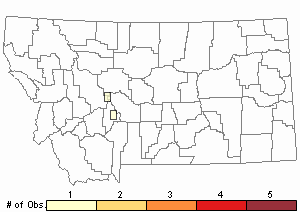
Recency
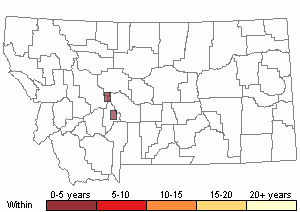
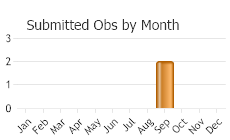
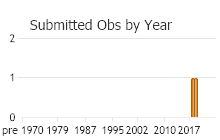
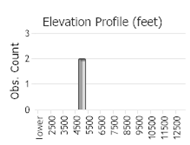 (Observations spanning multiple months or years are excluded from time charts)
(Observations spanning multiple months or years are excluded from time charts)
Migration
Somewhat migratory; adults apparently do not hibernate successfully in Montana (and in other western regions farther north), so the state lacks a permanent population (Scott 1986, Guppy and Shepard 2001, James and Nunnallee 2011).
Habitat
A wide variety of open areas throughout the range, including urban gardens and parks (Scott 1986, Guppy and Shepard 2001, James and Nunnallee 2011).
Food Habits
Larval food plants include Althaea, Anaphalis, Antennaria, Antirrhinum, Arctium, Artemisia, Carduus, Cirsium, Echium, Gnaphalium, Helianthus, Impatiens, Lupinus, Malva, Myosotis, Onopordum, Senecio, Silybum, Urtica, and Vernonia. Adults visit mud, sap, and carrion as well as sip flower nectar (Scott 1986, Guppy and Shepard 2001, James and Nunnallee 2011).
Reproductive Characteristics
Female may lay as many as 65 eggs in two days, usually singly and attached to upper surfaces of leaves. Eggs hatch in about 6-7 days, first instar larvae (L1) excavate pockets between leaf layers creating "windowpane" areas; later instars move to leaf surfaces where they form large thick webs over nests and live singly. Larval instars last 3 days each for L1-2, 4 days each for L3-4, 6 days for L5. Pupation occurs mostly on food plant. No overwintering occurs over much of range, but in the north some adults and pupae hibernate. Males perch on hilltop shrubs or ground, or other elevated locations, to await passage of females (Ferris and Brown 1981, Scott 1986, James and Nunnallee 2011).
Stewardship Responsibility
References
- Literature Cited AboveLegend:
 View Online Publication
View Online Publication Ferris, C.D. and F.M. Brown (eds). 1981. Butterflies of the Rocky Mountains. Univ. of Oklahoma Press. Norman. 442 pp.
Ferris, C.D. and F.M. Brown (eds). 1981. Butterflies of the Rocky Mountains. Univ. of Oklahoma Press. Norman. 442 pp. Glassberg, J. 2001. Butterflies through Binoculars: A Field Guide to the Butterflies of Western North America. Oxford University Press.
Glassberg, J. 2001. Butterflies through Binoculars: A Field Guide to the Butterflies of Western North America. Oxford University Press. Guppy, C.S. and J.H. Shepard. 2001. Butterflies of British Columbia: including western Alberta, southern Yukon, the Alaska Panhandle, Washington, northern Oregon, northern Idaho, northwestern Montana. UBC Press (Vancouver, BC) and Royal British Columbia Museum (Victoria, BC). 414 pp.
Guppy, C.S. and J.H. Shepard. 2001. Butterflies of British Columbia: including western Alberta, southern Yukon, the Alaska Panhandle, Washington, northern Oregon, northern Idaho, northwestern Montana. UBC Press (Vancouver, BC) and Royal British Columbia Museum (Victoria, BC). 414 pp. James, D.G. and D. Nunnallee. 2011. Life histories of Cascadia butterflies. Corvallis, OR: Oregon State University Press. 447 p.
James, D.G. and D. Nunnallee. 2011. Life histories of Cascadia butterflies. Corvallis, OR: Oregon State University Press. 447 p. Kohler, S. 1980. Checklist of Montana Butterflies (Rhopalocera). Journal of the Lepidopterists' Society 34(1): 1-19.
Kohler, S. 1980. Checklist of Montana Butterflies (Rhopalocera). Journal of the Lepidopterists' Society 34(1): 1-19. Scott, J.A. 1986. The butterflies of North America: a natural history and field guide. Stanford University Press, Stanford, California.
Scott, J.A. 1986. The butterflies of North America: a natural history and field guide. Stanford University Press, Stanford, California. Stanford, R.E. and P.A. Opler. 1993. Atlas of western USA butterflies: including adjacent parts of Canada and Mexico. Unpubl. Report. Denver and Fort Collins, Colorado 275 pp.
Stanford, R.E. and P.A. Opler. 1993. Atlas of western USA butterflies: including adjacent parts of Canada and Mexico. Unpubl. Report. Denver and Fort Collins, Colorado 275 pp.
- Additional ReferencesLegend:
 View Online Publication
View Online Publication
Do you know of a citation we're missing? Allen, T.J., J.P. Brock, and J. Glassberg. 2005. Caterpillars in the field and garden: a field guide to the butterfly caterpillars of North America. Oxford University Press.
Allen, T.J., J.P. Brock, and J. Glassberg. 2005. Caterpillars in the field and garden: a field guide to the butterfly caterpillars of North America. Oxford University Press. Brock, J.P. and K. Kaufman. 2003. Kaufman Field Guide to Butterflies of North America. Houghton Mifflin Company, New York, NY 284 pp.
Brock, J.P. and K. Kaufman. 2003. Kaufman Field Guide to Butterflies of North America. Houghton Mifflin Company, New York, NY 284 pp. Forister, M.L., C.A. Halsch, C.C. Nice, J.A. Fordyce, T.E. Dilts, J.C. Oliver, K.L. Prudic, A.M. Shapiro, J.K. Wilson, J. Glassberg. 2021. Fewer butterflies seen by community scientists across the warming and drying landscapes of the American West. Science 371:1042-1045.
Forister, M.L., C.A. Halsch, C.C. Nice, J.A. Fordyce, T.E. Dilts, J.C. Oliver, K.L. Prudic, A.M. Shapiro, J.K. Wilson, J. Glassberg. 2021. Fewer butterflies seen by community scientists across the warming and drying landscapes of the American West. Science 371:1042-1045. Forister, M.L., E.M. Grames, C.A. Halsch, K.J. Burls, C.F. Carroll, K.L. Bell, J.P. Jahner, et al. 2023. Assessing risk for butterflies in the context of climate change, demographic uncertainty, and heterogeneous data sources. Ecological Monographs 93(3):e1584. https://doi.org/10.1002/ecm.1584
Forister, M.L., E.M. Grames, C.A. Halsch, K.J. Burls, C.F. Carroll, K.L. Bell, J.P. Jahner, et al. 2023. Assessing risk for butterflies in the context of climate change, demographic uncertainty, and heterogeneous data sources. Ecological Monographs 93(3):e1584. https://doi.org/10.1002/ecm.1584 Layberry, R.A., P.W. Hall, and J.D. LaFontaine. 1998. The Butterflies of Canada. University of Toronto Press. 280 pp. + color plates.
Layberry, R.A., P.W. Hall, and J.D. LaFontaine. 1998. The Butterflies of Canada. University of Toronto Press. 280 pp. + color plates.
- Web Search Engines for Articles on "American Lady"
- Additional Sources of Information Related to "Insects"





